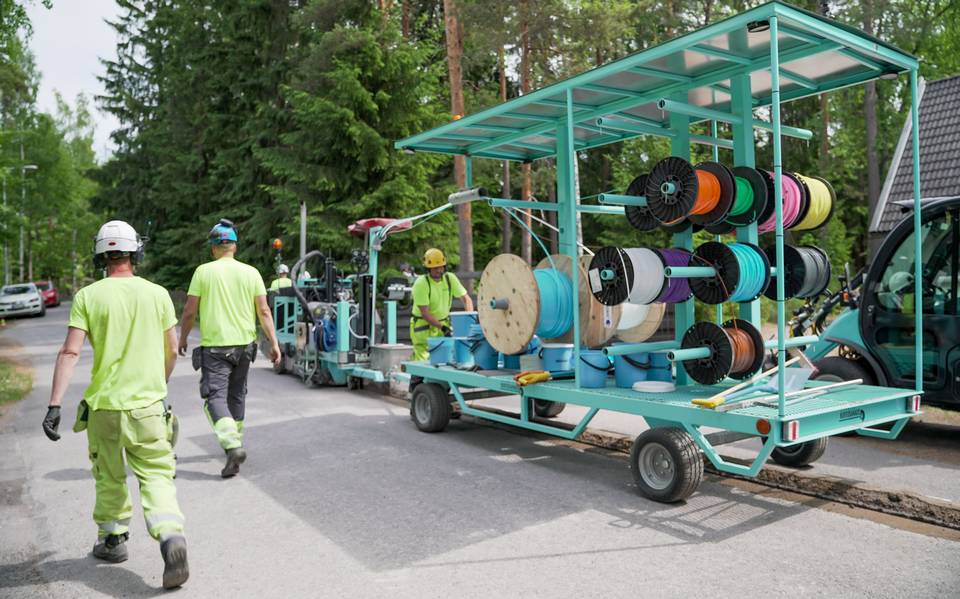The small municipality of Kauniainen in the centre of Espoo is the first locality in Finland where the authorities have granted the telecom operator Telia a permission to build a fibre optic cable network using the micro-trenching technique.
Micro-trenching means that a fibre optic cable installation groove is cut into the road, through the asphalt. This renders installation of fibre optic cables significantly less expensive, quicker and more environmentally friendly as compared to the traditional digging deep into the ground.
If traditional fibre optic cable installation progresses about 30-60 metres per day, micro-trenching allows installing even 500-600 metres of cable daily. Thus, at best, installation pace is more than ten times quicker.
The faster fibre optic cable is installed, the cheaper are the construction works. This is very important, since according to operators, excavation is the most expensive component of fibre optic cable network construction. Traditional fibre optic cable excavation costs roughly €5 per metre.
Saara Mutka, Business Manager of Telia’s Open Fibre project, says that other Finnish municipalities have still not approved the micro-trenching technique.
Jukka Huhtanen, who is responsible for the construction of Telia’s networks in Finland, says that the municipalities are suspicious about three factors.
The first obstacle lies in planning regulations, according to which cables in planned areas must be installed to the depth of 70 centimetres. In case of micro-trenching, the cable installation depth is about 40 centimetres.
Another factor is equity, in other words, can a single operator be allowed to install a fibre optic cable network to a detached house area. Although, in Huuhtanen’s opinion, if an operator has already installed a fibre optic cable network to a detached house area, other operators would lose their interest in the area anyway.
The third factor is that the planning of excavation and other construction works could become more difficult, since there might be cables closer to the ground surface than 70 centimetres.
In some situations, the condition of the asphalt may also raise doubts.
Telia has installed fibre optic cables using the micro-trenching technique to hundreds of thousands of households in Sweden, and according to Huhtanen, has gained good experience there.
“In Sweden, though, building of fibre optic cable networks is otherwise more developed, while in Finland we are at very early stages in many localities.”
In Kauniainen, Telia will install about 13 kilometres of fibre optic cables to provide connection possibilities for 400 households, and the project should be completed this summer.
With less than 10,000 inhabitants and a total area of only about six square kilometres, Kauniainen is the smallest municipality in the Helsinki metropolitan area.
Last summer, in co-operation with Empower TN, Telia tested the technique by installing a few kilometres of fibre optic cables at the Länsi-Pakila neighbourhood of Helsinki. The same partner also functions as the contractor in the Kauniainen project.
Juha Huhtanen says the next step will be revision of the results achieved in Länsi-Pakila with the City of Helsinki Construction Office and consideration of the possible premises for further development.
According to Huhtanen, there have also been discussions with the officials of the Kirkkonummi municipality, but the permit process is still in progress.
By its Open Fibre operation model, Telia means that the operator invests in network construction if a sufficient number of residents within an area commit to obtaining a fibre optic cable connection.
Text: Tero Lehto
Photo: Telia
Kauniainen is the first town in Finland where fibre optic cable network is being built using the new micro-trenching technique.
The small municipality of Kauniainen in the centre of Espoo is the first locality in Finland where the authorities ...
If fibre networks were built by way of micro-trenching, the construction works on your own home street would ...

